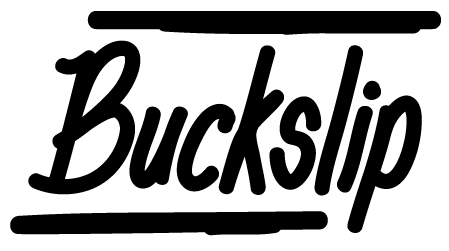Basically
This week, Lil Peep as a posthumous legend. Nicki Minaj as a try-hard. Chance the Rapper as Boyz II Men. Plus an earthquake at the border. The grand truck reveal. A mystery satellite mission. Spotify’s progressive take on holidays. The most expensive (and scandalous) painting ever sold. Plus Cards Against Humanity bets against The Wall. Here’s to a Happy Thanksgiving to each and every one of our American readers—except you, Harvey and Trump and Paul Ryan.
Verbatim
A couple of weeks back Sam Kahn wrote a great piece for The Awl about “the quiet style”—an aesthetic, exemplified by Annie Baker’s great theatre works, in which previously dominant sensibilities forged in bluntness and brashness give way to a new (and kinda radical) contemplation of silence and stillness. The quiet style, Kahn wrote, takes “the attributes of my much-maligned generation—our restlessness, fecklessness, envy, solipsism —and turns them into something like a prayer.” LA Times architecture critic Christopher Hawthorne was inspired by that piece to consider how this trend is showing itself amongst a new cadre of architects, shirking off the hyperactive buildings of the last generations of masters in favour of something more… boring?
The new architecture is lean more as a result of finding strength in basic but substantial forms than in defiantly going without. This isn’t a hunger strike. It’s closer to a calm expression of faith in architecture itself. How long the unhurried approach will stick around is among the most intriguing questions to ask about architecture at this moment. Is it best understood as a transitional style? (Lee has described the new ethos as “momentary,” a chance for architecture to “get resituated.”) If so, how soon might it fade and what might it lead to? I don’t mind waiting a bit for the answers to those questions. If there’s one thing linking the quiet style in theater to architecture’s new reticence, after all, it is not just a tolerance for the sound of one’s own thoughts and the audible ticking of an existential clock but an appetite for them.
Things
The data of climate science live not only in the biggest, oldest data of ice, rock and sediment, but also in faulty refrigerators and tubes and neural networks in arbitrary clouds, all facing various threats not just from thaws and rising sea levels but from funding cuts and power cuts too. For Places, Shannon Mattern argues that scientists, conservators and curators need to think across the gaps in the landscapes that divide them, helping them get their troves in order, while posing even bigger questions still.
Casper is scrapping its online publication Van Winkle—so hyped when it launched—and replacing it with the McSweeney’s-aligned Woolly, shifting focus from “the science of sleep” to “wellness and comfort” in step with a product-line expansion. Digiday looks beyond this brand-oriented justification to illuminate other factors driving content program churn. Ostensibly consumer-oriented content marketing projects drive hype not through their editorial content, but through investor-oriented narratives of reinvention. This theatre of innovation demands ever-higher stakes. Investors are thrilled by the audacity of betting on unlikely editorial projects with ambiguous ROI, which feeds the open-ended sense of possibility they crave. These are audience-driven projects, but the audience isn’t who we might think.
Things aren’t so different in the world of big digital media properties, where Josh Marshall argues we’re in the midst of a severe crash, set up not so much by ad revenue losses but by venture-backed delusions of scale. When capital pulls away, he says, there’s a trap door that swings open, and we all fall in.
Today’s NY Times cover story on the systemic, political and human failures behind New York’s profoundly broken subway system is a phenomenal piece of shoe leather reporting, the likes of which we rarely get these days outside of the directly political. Unless you’re speaking to nerds like us, it’s hard to tell great infrastructure stories that people care about. But here’s an unequivocal, irrefutable case for something that seems so obvious when you say it out loud: when you stop spending money on something that matters to millions, it’ll fall to pieces pretty quickly!
We continue to appreciate Kashmir Hill’s tireless work on the “how the heck does Facebook know that?” beat. The latest instalment: your shadow profile, which you can’t opt out of.
What is neoliberalism? Who today would identify as a neoliberal? According to Dani Rodrik, neoliberalism isn’t an economic policy, but an ideology of ideological economics. Neoliberalism mistakes first-order economic principles for policy, neglecting all the applied, contextual nuance that makes economics what it is. We make the same mistake when we bristle at principles of efficiency, incentives, and property rights, conflating each with a familiar institutional arrangement. These arrangements may have legitimate shortcomings, but legitimate alternative arrangements are possible. Neoliberalism has become an all-purpose cuss that perpetuates cynical anti-economic thinking, limiting our imagination of productive alternatives. Wait, is productivity a neoliberal metric?
It’s 1991, and somehow Laurie Anderson, JG Ballard, Steve Reich and Renzo Piano have been trapped inside a Japanese telephone network. (Can any of our Japanese-fluent readers tell us if there’s a way to access the actual audio here amidst the great mid-90s HTML? We know that would go against the whole point but our fax machine is on the fritz.)
Whisky science latest: can you shortcut the magical alchemy of aging with a belief in the basics of chemistry? Of course you can. But let’s apply the golden rule of science: it doesn’t mean that you should.
And here, apparently, is every record shop on the planet. Or at least, a database that aims to be that. (Which of course means an opportunity for charts n graphs. Yay.)
Fare thee well, Novembrists. And please, pass the word along.




